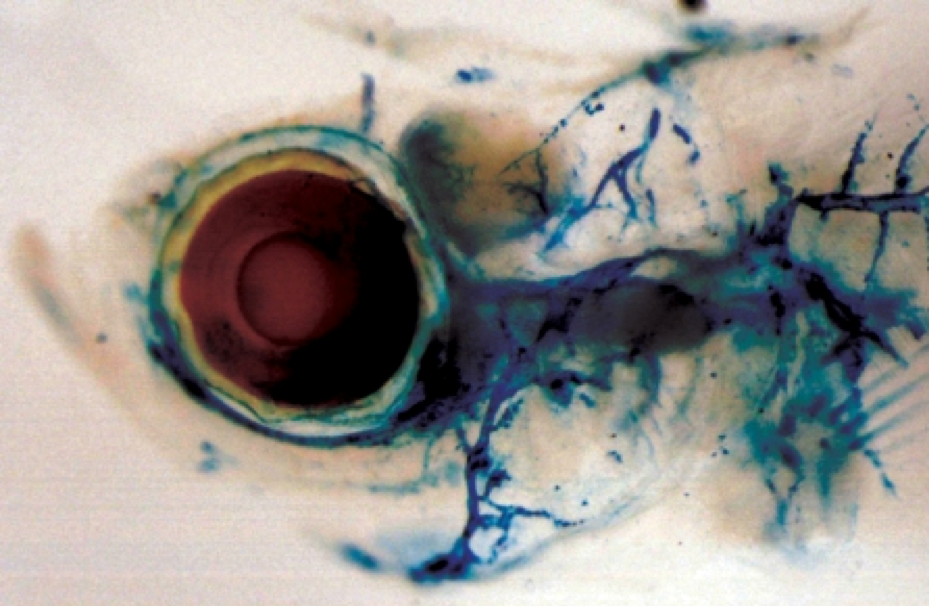Heart disease is the leading cause of death in the United States. The Centers for Disease Control’s straightforward statement of that fact belies the complex truth: heart problems are both common and varied, affect people of all ages, and strike equally across gender and economic borders. And according to the American Heart Association, more than 80 million Americans have one or more forms of cardiovascular disease, such as high blood pressure. Factors such as obesity, diabetes, and inactivity greatly contribute to heart and cardiovascular disease, although congenital and genetic issues also come into play.
At the Weizmann Institute of Science, researchers are not only searching for solutions to this health epidemic, but are also investigating the very earliest causes, such as problems during embryonic formation. Just a few examples of the Institute’s ongoing research into heart and cardiovascular problems are presented below.

Lymphatic system of zebrafish, studied to understand embryonic development and the heart and cardio systems.
Understanding heart formation
How does the heart grow into a piece of precision machinery with chambers, valves, and perfectly synchronized pumping mechanisms? And how do the branching veins and arteries that transport the blood develop in concert with the growing limbs and organs? A Weizmann scientist is studying how blood and lymphatic vessels form during embryonic development. Her findings may, in the future, aid in designing methods of new blood vessel growth and renewal to treat atherosclerosis and other cardiovascular diseases, as well as in blocking the growth of blood vessels that feed tumors. Read more
Revealing the stress connection
An Institute scientist is researching the genetic roots of such phenomena as stress and anxiety. He has found, for instance, that the presence of certain proteins determines an animal’s response to emotional or physiological stress. His research has also revealed a genetic connection between emotional stress and such disorders as diabetes, obesity, and heart disease. Read more
Finding a genetic mutation
Weizmann researchers and colleagues at Israel’s Sheba Medical Center identified a gene that causes polymorphic ventricular tachycardia (PVT), a fatal heart condition. Characterized by a fast and irregular heartbeat, seizures, and even sudden death, PVT primarily affects young children. The genetic mutation, which was found in an Israeli Bedouin tribe, had caused the deaths of nine children in a single tribe. Read more
Shedding light on deformities
A Weizmann scientist who studies the developmental connection between the face and the heart has turned his attention to DiGeorge syndrome, a congenital condition that causes various abnormalities in those areas. Facial defects can include cleft palate or difficulty in eating or speaking; heart defects can include misplaced aorta or deformities in the wall separating the chambers. Now, by studying the genetic network behind the syndrome, he and his team have solved a piece of the condition’s puzzle. Read more
